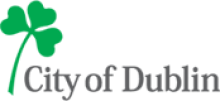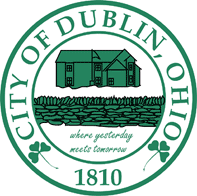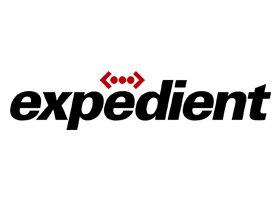
Fast, affordable Internet access for all.

Award-winning supercomputing apps, medical research, economic development, and quantum computing advances. What do they all have in common? They all depend on the DubLINK network running underneath Dublin, Ohio, a suburb on the Northwest edge of Columbus. The city of 43,000 people has 125 miles of fiber optics in the ground, both within its own boundaries and in the form of fiber purchased by the city within metro and regional networks.
DubLINK began in 1999 as a public private partnership with the Fishel company to build an institutional network. In the wake of the 1996 Telecommunications Act, Dublin worried that a recent massive investment of $70 million in streetscaping would be undone as competing providers dug up newly paved streets to install fiber optics. To avoid this, the City signed a franchise agreement with Fishel to install a multi-conduit system, with the city receiving some conduit for its own use.
Using 1.25” conduits installed in the city’s existing sewer system, the network runs for 25 miles underneath Dublin’s business district and connects six city buildings, who use their own lit fiber for data and voice services, eliminating expense leased line fees. This has allowed the city to save approximately $400,000 per year for the last 12 years in connectivity and information technology expenses.
In 2004, Dublin spent $3.5 million to purchase 96 strands running 100 additional miles through Columbus FiberNet, bringing the total length of the DubLink network to its current 125 miles. FiberNet is a duct system that runs throughout a significant portion of central Ohio, including Columbus and its surrounding suburbs.
The following year, the City of Dublin struck a deal with the Ohio Academic Resources Network (OARnet). OARnet is a 1,600 mile statewide fiber backbone connecting K-12 schools, colleges, universities, federal research labs, and other institutions. A $500,000 grant from the Ohio Board of Regents allowed DubLINK to make its connection with OARnet, and the city gave OARnet an indefeasible right to use 4 of its 96 fiber strands throughout its entire 125 mile network. They called their partnership CORN, for the Central Ohio Research Network. Earlier this year, the Ohio State Legislature awarded DubLink $300,000, which along with a $250,000 National Science Foundation grant and a $328,000 local contribution, will allow DubLINK to match OARnet’s 100 Gbps speeds throughout its entire network.

According to Dana McDaniels, Dublin's Director of Development, the city has spent approximately $5.5 million over the years in building, purchasing, and upgrading DubLINK. For this investment, he estimates that the city has received at least a $35 million return on investment already. This includes avoided costs around $4.8 million ($400,000 per year over 12 years), leases to telecoms and other entities of about one third of the city's dark fiber that amount to $3.2 million, and the much more significant gains in employment and thus tax revenue that have resulted from companies expanding or relocating in Dublin to take advantage of its incredible connectivity.
Dublin has a two percent income tax, one quarter of which is dedicated to a wide variety of capital improvement projects. It also uses a small part of this revenue as collateral for tax-increment financing bonds, which it has used to fund some of its share of network construction costs, with the rest of the $5.5 million in total network investments coming from the regular capital improvements budget.
The network is currently being used by a wide variety of public, private, and nonprofit institutions, including National Mutual Insurance, Nestle, Dublin Methodist Hospital, and online reference catalogue company OCLC Inc. OCLC connects to 70,000 libraries around the world, but relies on DubLINK to secure its data by connecting to backup data centers throughout the region.
Rather than narrowly focusing on network revenue, Dublin takes a broader economic development approach to its fiber resources. Development Director McDaniels uses fiber connectivity to lure businesses to locate or expand in Dublin the way other cities use tax credits or land giveaways. Ohio Health, which runs six hospitals in the state and has various other facilities, was granted 4 strands of DubLINK's fiber, which helped them decide to headquarter in the city. They now light and manage the fiber themselves, using it connect to all of their facilities throughout the region. Because they are able to so easily run their operations from Dublin, they have expanded their employment in the city from 300 to 1,200 people.
This September, one of DubLINK’s institutional anchors announced that they would be using DubLink to test new applications for quantum computing. Battelle Memorial Institute, a nonprofit applied science and technology company, signed a five-year deal with DubLINK to use the city’s fiber for their Quantum Key Distribution network, the first commercially-funded network to use quantum computing to encrypt information. Using subatomic particles instead of binary code to transmit information, Battelle claims they have created a form of encryption that will be hack-proof even if quantum computers make traditional encryption techniques obsolete.
DubLINK proved its usefulness in 2013 as well, when a collaborative including representatives from the City of Dublin, the University of Missouri, and The Ohio State University were recognized for creating the “Best Application for Advanced Manufacturing” at the Next Generation Application Summit in Chicago. The team developed an app called Simulation-as-a-Service, which allows small businesses and labs to remotely access supercomputing capability. Small manufacturers would be able to use the app (in combination with a robust fiber optic connection) to run design simulations through supercomputers on the Ohio State campus, as well as trade design information in massive data files.
According to Prasad Calyam, an assistant professor of computer science at the University of Missouri and the leader of the team developing the app:
“The app really requires the infrastructure,” said Calyam. “The infrastructure is not the end goal of the project. It’s really the app. But we couldn’t build the app without the infrastructure.”
“Our work on Simulation-as-a-Service is one example where having a city invest in broadband infrastructure will help economic development,” said Calyam. “It helps companies to move there, to use the infrastructure, and essentially build new kinds of collaborations.”

The combination of DubLINK’s fiber infrastructure and proximity to The Ohio State University has also helped attract a growing number of data centers and medical research operations. Dublin-based Cardinal Health opened a research center in the city earlier this year, and Expedient Data Centers recently announced plans for a $52 million data center.
An even bigger fish is on the line for Dublin, which is competing with neighboring suburb Hilliard to be the location for a new $1.1 billion Amazon data center. Amazon has been secretive about its plans, but Ohio Governor John Kasich recently confirmed earlier leaks that the center would be located in the Columbus area.
Dublin is pushing ahead with the expansion of DubLINK in the coming months and years. In conjunction with the upgrade to 100 Gbps speeds, the network is also beginning to move towards an open access Fiber-to-the-Premise model for major office and multitenant buildings in the city. Rather than bringing fiber to the curb and waiting for building owners to take advantage, the city will be bringing the fiber directly into at least 20 buildings this year and about 10 each year thereafter, with the option to increase the pace if it incents businesses to locate or expand in Dublin.
DubLINK has also struck a deal with a local data center that will serve as a "meet me" room and is in talks with ISPs, which will allow those intitutions using DubLINK fiber to connect to whatever ISP they wish over the publicly owned fiber. It will also allow them to connect to OARnet, the National Science Foundation's GENI rack, and the Ohio State University's supercomputer remotely - all at 100 Gbps.
The local schools are on the docket for connections as well, with the three city high schools and administration building at the head of the line. They all stand to gain 100 Gbps network connections, and will also benefit from the nearly limitless educational resources of Ohio's universities and research organizations available through OARnet.
Whether or not Dublin successfully woos Amazon, its fiber optic network has proven to be a valuable community asset. It has allowed the city to partner with a local provider to launch a city-wide Wi-Fi system over 24 square miles, which uses DubLINK for backhaul and in return allocates 25% of its bandwidth to the city for its own uses, such as police communication and logistical support for large public events. It has supported medical and computing research, creating good jobs in the process. For all these achievements, Dublin has twice been named a Top 7 Community by the Intelligent Communities Forum, and last year Dana McDaniels, who oversaw DubLINK's development, was given ICF's Lifetime Achievement Award.
